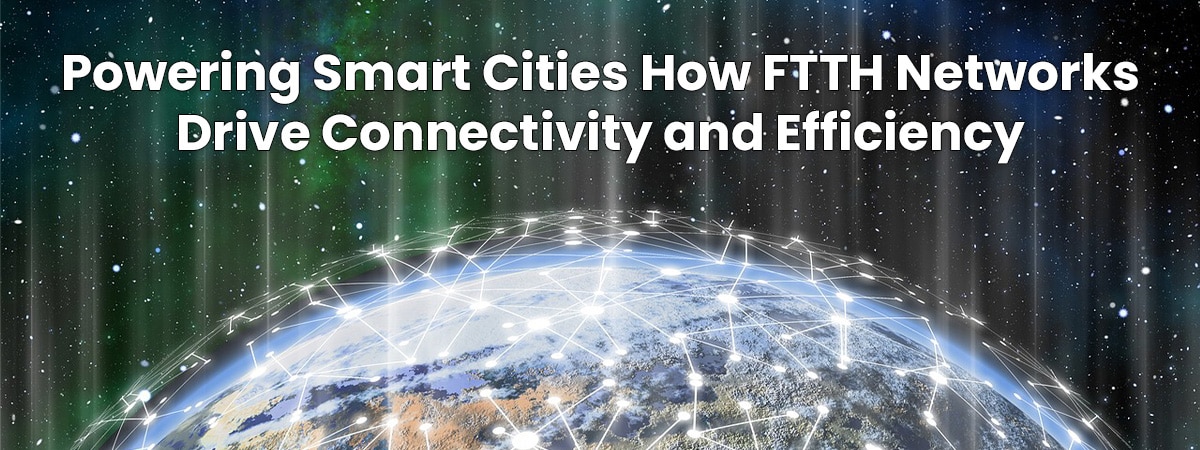Introduction:
Smart cities are at the forefront of urban development, harnessing technology to create sustainable, efficient, and connected environments. One crucial element fueling the development of smart cities is Fiber-to-the-Home (FTTH) networks. FTTH networks play a vital role in facilitating the connectivity of various smart devices, sensors, and systems, contributing to improved efficiency and quality of life. In this article, we delve into how FTTH networks are driving the evolution of smart cities and revolutionizing urban living.
- Seamless Connectivity:
FTTH networks provide the backbone for seamless connectivity in smart cities. With high-speed fiber optic connections directly to homes and businesses, these networks enable the smooth transmission of data, supporting the interconnection of smart devices, sensors, and systems. From smart homes and smart buildings to connected infrastructure and public services, FTTH networks ensure reliable and fast communication between devices, enhancing the overall efficiency of smart city operations. - Enhanced Efficiency and Sustainability:
FTTH networks empower smart cities to optimize resource utilization and improve efficiency. Through connected systems and real-time data exchange, cities can monitor and manage energy consumption, traffic flow, waste management, and water distribution more intelligently. This leads to reduced energy waste, improved traffic management, enhanced sustainability, and a more eco-friendly urban environment. - Advanced Public Services:
FTTH networks enable smart city initiatives to deliver advanced public services to residents. For instance, intelligent transportation systems powered by FTTH enable real-time traffic monitoring, smart parking solutions, and efficient public transportation networks. Additionally, smart healthcare systems can utilize the connectivity provided by FTTH to enable telemedicine services, remote patient monitoring, and efficient emergency response systems. - Data-Driven Decision Making:
FTTH networks generate a vast amount of data from various smart devices and sensors spread across the city. This wealth of data provides invaluable insights to city planners, enabling data-driven decision making and effective resource allocation. By leveraging the connectivity offered by FTTH, smart cities can harness big data analytics to identify patterns, optimize urban planning, enhance public safety measures, and improve overall quality of life for residents. - Community Engagement and Participation:
FTTH networks promote community engagement and participation in smart cities. With high-speed internet connectivity, residents can actively participate in civic activities, access online government services, and engage in virtual community initiatives. This connectivity fosters a sense of community, encourages collaboration, and empowers citizens to contribute to the development and betterment of their city.
Conclusion:
FTTH networks are the backbone of smart cities, driving connectivity, efficiency, and quality of life. By enabling seamless communication between various smart devices, sensors, and systems, FTTH networks contribute to the development of sustainable, intelligent urban environments. From improved resource management to advanced public services and data-driven decision making, the impact of FTTH on smart city development is profound. As cities continue to evolve, FTTH networks will play a pivotal role in shaping the future of urban living, fostering innovation, and creating connected communities that thrive in the digital era.
